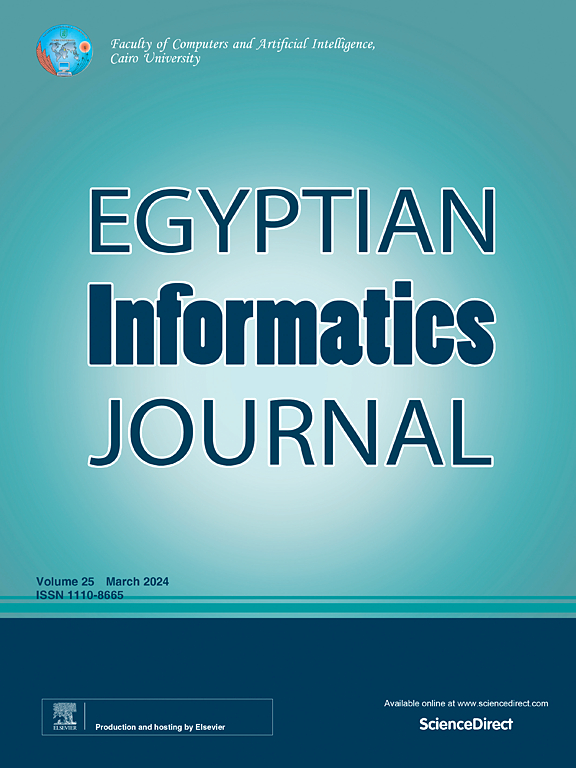基于模糊逻辑和分层树创建的移动自组网路由算法
IF 4.3
3区 计算机科学
Q1 COMPUTER SCIENCE, ARTIFICIAL INTELLIGENCE
引用次数: 0
摘要
移动自组织网络(manet)由于其动态拓扑结构、缺乏固定基础设施和有限的能源资源而有其局限性。因此,本文提出了一种结合模糊逻辑和层次树拓扑的路由算法来克服这些问题。该算法的第一步是使用模糊推理系统根据能量水平、连接数和内存缓冲区等因素确定网络中节点的权重。然后使用这些权重来形成簇,然后形成分层树拓扑结构。这种拓扑结构在路由性能方面是有效的。实验结果表明,所提出的解决方案提高了网络的效率。与原有的算法相比,该算法的分组发送率提高了4%,能耗降低了10.03%,端到端时延降低了16.08%。这种改进是由于使用模糊逻辑对节点进行动态加权以及层次树结构的稳定性。本文章由计算机程序翻译,如有差异,请以英文原文为准。
A routing algorithm for mobile ad-hoc networks using fuzzy logic and hierarchical tree creation
Mobile Ad hoc Networks) MANETs) have their limitations because of their dynamic topology, absence of fixed infrastructure, and restricted energy resources. This paper therefore presents a new routing algorithm that incorporates fuzzy logic and hierarchical tree topology to overcome these problems. The first step in the proposed algorithm is to identify the weight of nodes in the network depending on factors such as energy level, number of connections, and memory buffer using a fuzzy inference system. These weights are then used to form clusters and then the formation of a hierarchical tree topology is done. This topology is effective in routing performance. The results of experiments show that the proposed solutions increase the efficiency of a network. The packet delivery ratio was increased by 4% while the energy consumption was reduced by 10.03% and end-to-end delay by 16.08% when the proposed algorithm was used instead of previous methods. This improvement is due to the dynamic weighting of nodes by using fuzzy logic and the stability of the hierarchical tree structure.
求助全文
通过发布文献求助,成功后即可免费获取论文全文。
去求助
来源期刊

Egyptian Informatics Journal
Decision Sciences-Management Science and Operations Research
CiteScore
11.10
自引率
1.90%
发文量
59
审稿时长
110 days
期刊介绍:
The Egyptian Informatics Journal is published by the Faculty of Computers and Artificial Intelligence, Cairo University. This Journal provides a forum for the state-of-the-art research and development in the fields of computing, including computer sciences, information technologies, information systems, operations research and decision support. Innovative and not-previously-published work in subjects covered by the Journal is encouraged to be submitted, whether from academic, research or commercial sources.
 求助内容:
求助内容: 应助结果提醒方式:
应助结果提醒方式:


